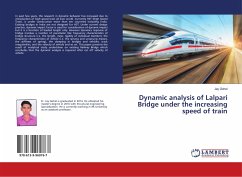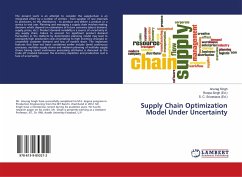
Dynamic analysis of Lalpari Bridge under the increasing speed of train
Versandkostenfrei!
Versandfertig in 6-10 Tagen
27,99 €
inkl. MwSt.

PAYBACK Punkte
14 °P sammeln!
In past few years, the research in dynamic behavior has increased due to introduction of high speed train all over world. Currently HST (High Speed Train), is under construction more than ten countries including India. Existing bridges in India are not designed for HST. Under current design practice, dynamic impact factor is used for consideration of dynamic impact but it is a function of loaded length only. However dynamics response of bridge involves a number of parameter like frequency characteristics of bridge structure (i.e. the length, mass, rigidity of individual member), the frequency ...
In past few years, the research in dynamic behavior has increased due to introduction of high speed train all over world. Currently HST (High Speed Train), is under construction more than ten countries including India. Existing bridges in India are not designed for HST. Under current design practice, dynamic impact factor is used for consideration of dynamic impact but it is a function of loaded length only. However dynamics response of bridge involves a number of parameter like frequency characteristics of bridge structure (i.e. the length, mass, rigidity of individual member), the frequency characteristics of vehicle (i.e. the sprung and unsprung masses, the stiffness of spring), the damping in bridges and vehicles, track irregularities, and the velocity of vehicle and so on. This paper presents the result of analytical study undertaken on existing Railway Bridge which concludes that the dynamic analysis is required after cut off velocity of vehicle.












